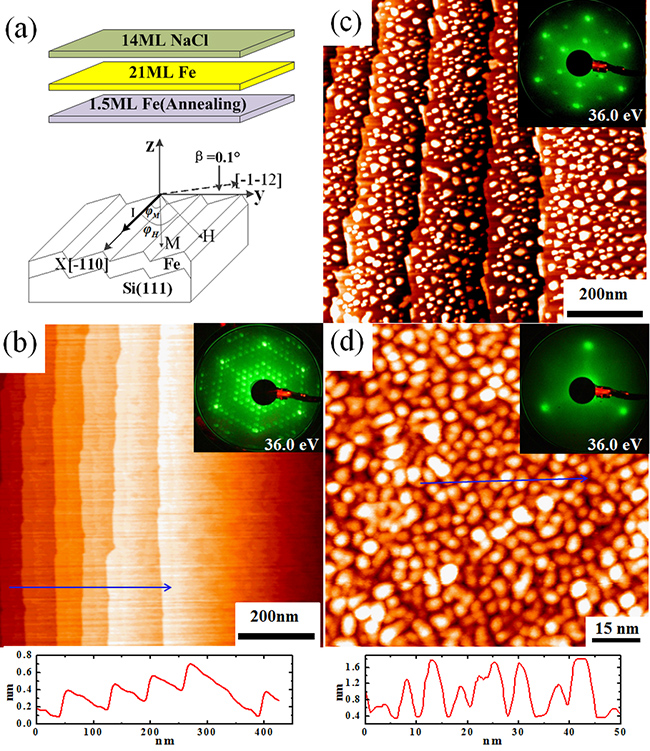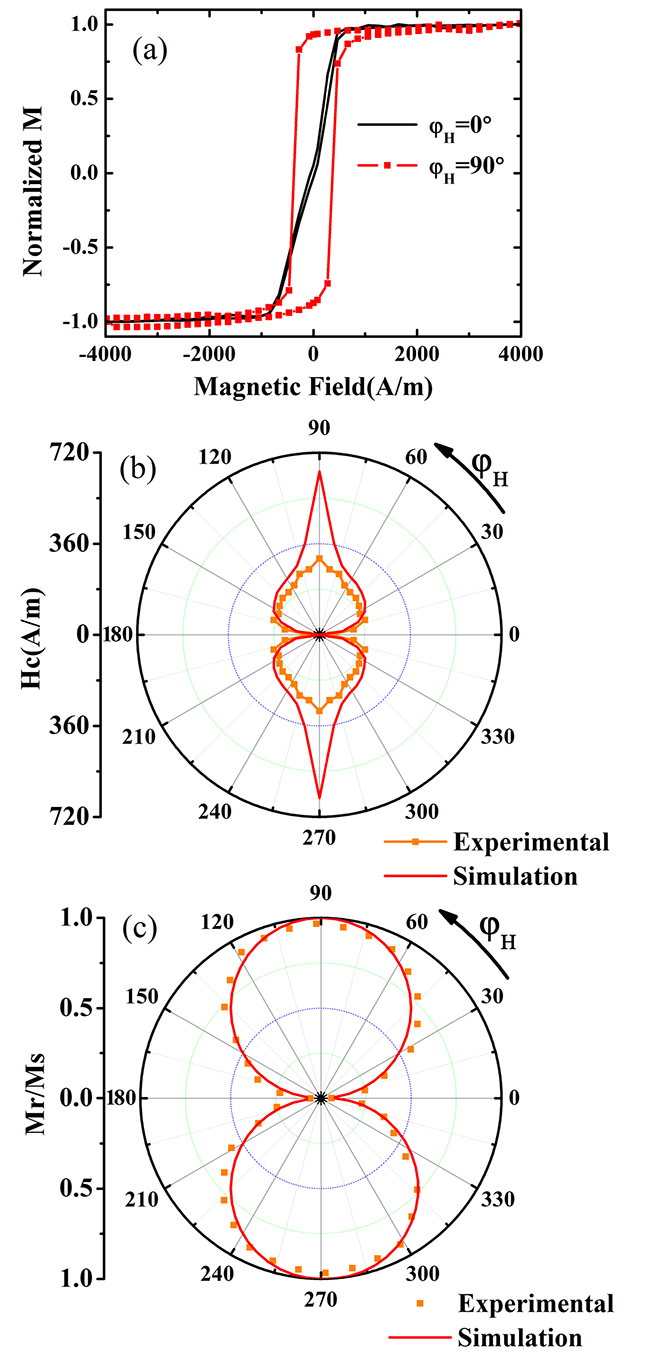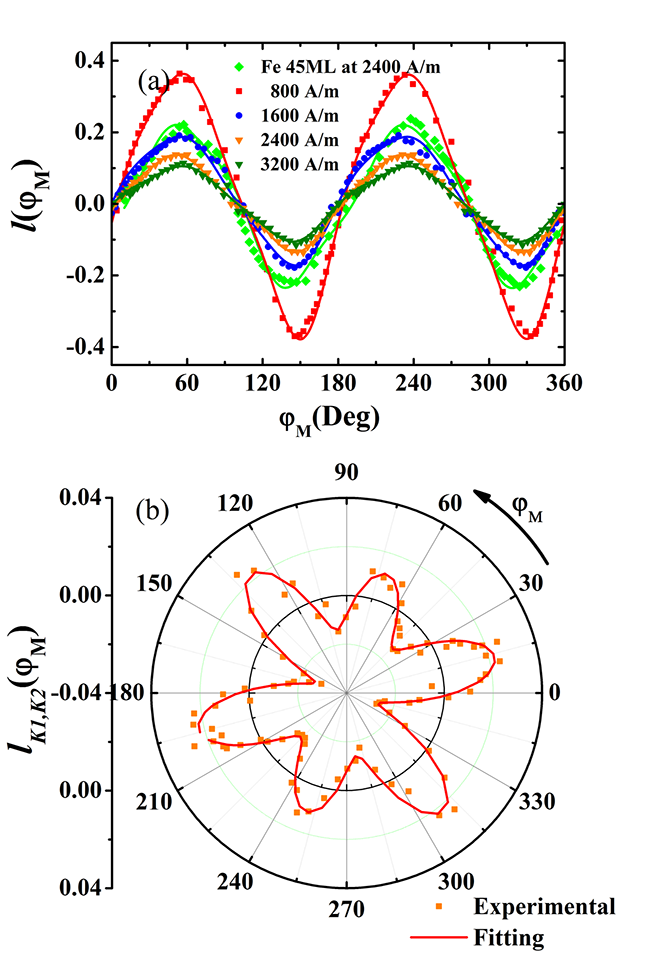Researchers find A Novel Approach to Determine Magnetic Anisotropy Constants of Fe ultrathin films on Si(111) substrate
Date:22-08-2013 Print
Recently, the growth and magnetic properties of single crystal Fe film on Si(111) surface have been investigated owing to its application in integration of magnetic devices in Si-based technology and new opportunities in spintronics. In the case of bcc Fe film grown on Si(111) substrate, the six-fold symmetry of magnetic anisotropy energy exists only when magnetization is confined strictly in the Fe(111) plane. A small structural modification is sufficient to destroy the six-fold symmetry as a result of the contributions from other magnetic anisotropy energies. Therefore, the analysis of the magnetic anisotropy and magnetization reversal should be carried out carefully for Fe(111) films on Si(111) substrate.
Recently, Prof. CHENG Zhao-Hua and coworkers from Beijing National Laboratory for Condensed Matter Physics at the Institute of Physics, Chinese Academy of Sciences reported a novel method to tune the terrace width of Si(111) substrate by varying the direction of heating current. It was observed that the uniaxial magnetic anisotropy (UMA) of Fe films grown on the Si(111) substrate enhanced with decreasing the terrace width and superimposed on the weak six-fold magnetocrystalline anisotropy. Although various methods have been developed to determine the magnetic anisotropy constants, the detailed information regarding the magnetic anisotropy cannot be distinguished precisely from the magnetization hysteresis loops.
Now they adopted a novel method to determine magnetic anisotropy constants of Fe ultrathin films on Si(111) substrate by anisotropic magnetoresistance(AMR). On the basis of AMR curves, the angle between the magnetization and magnetic field, and hence the normalized magnetic torque can be derived. The uniaxial magnetic anisotropy, first- and second-order magnetocrystalline anisotropy constants were precisely obtained by fitting the normalized magnetic toque curves.
Our work suggests that the extremely sensitive AMR can provide the detailed contributions of various magnetic anisotropy constants, including the first- and second-order magnetocrystalline anisotropy constants, as well as step-induced in-plane uniaxial magnetic anisotropy constant, of ultrathin Fe single crystal film on vicinal Si(111) surface.
This work was published on Scientific Report [Sci. Rep. 3, 2148; DOI:10.1038/srep02148 (2013).]. It was partly supported by the National Basic Research Program of China (973 program, Grant Nos. 2009CB929201, 2011CB921801, and 2012CB933102) and the National Natural Sciences Foundation of China (50931006, 11034004, 51021061, and 11274033).
CONTACT:
Prof. CHENG Zhao-Hua
Institute of Physics, Chinese Academy of Sciences
Email: zhcheng@iphy.ac.cn
Appendix:
http://www.nature.com/srep/2013/130705/srep02148/full/srep02148.html
 |
| Figure 1. The schematic configuration of the sample preparation and coordinate system used in AMR measurements and data analysis, and STM images of sample surface. |
 |
| Figure 2. The angular dependence of magnetocrystalline anisotropy energies. |
 |
| Figure 3 .The typical hysteresis loops and angular dependence of in-plane magnetic coercivity and remanence. |
 |
| Figure 4 ︱The in-plane AMR curves at different curves and the correlation between φHand φM |
 |
| Figure 5 ︱The normalized magnetic torque curves. |

